After an 8-kilometer hike in Dali, I encountered 1 ancient road and 2 ancient temples. Harvest a good couplet: Reading is everywhere in pure land, closed doors are deep mountains
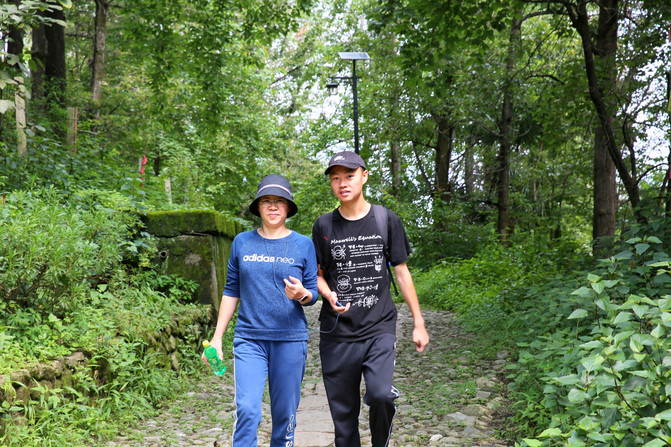
After an 8-kilometer hike at the foot of Cangshan Mountain in Dali, I encountered an ancient tea-horse road in Fengyangyi and two ancient temples with a long history. Harvest a good couplet: Reading is everywhere in pure land, but behind closed doors is deep mountains.

2020 is destined to be an extraordinary year. Due to the impact of the epidemic, this summer holiday has been postponed a lot than before. My son, who is studying in high school, only has three weeks of summer vacation. He has a lot of homework during the holiday and has to take online classes in the third week to prepare for the provincial examination that will be held at the beginning of the school year. So I chose the second weekend, a day with less homework, to go for a hiking trip to Cangshan near the B & B.
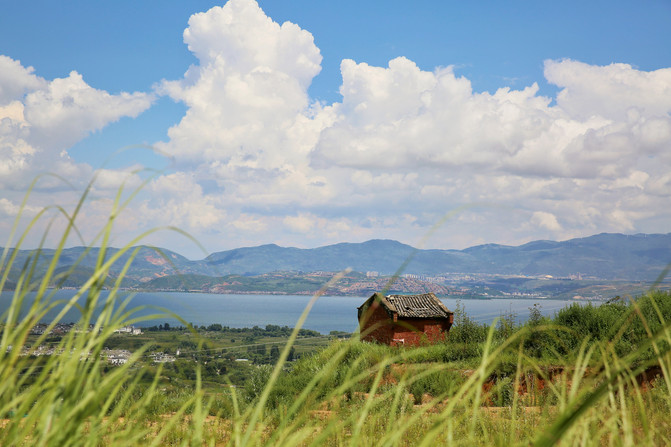
An ancient road: Fengyangyi Tea and Horse Ancient Road
Starting from Yuanwuwei B & B, passing through Dajingpan Village at the foot of Cangshan Mountain, and heading south along the center of the village for about 2 kilometers, you will reach the Fengyangyi Tea Horse Ancient Road.
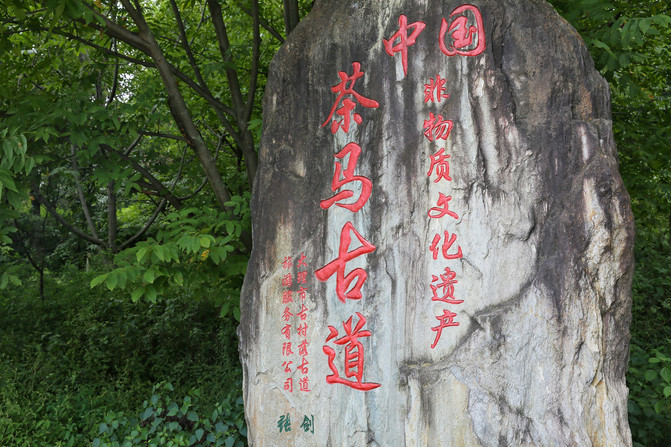
This ancient tea-horse road was newly built in the Han Dynasty and flourished during the Nanzhao Dali Dynasty. The completely preserved ancient road is more than 1900 meters long and 3.5 meters wide. In the middle of the road is paved with a long bluestone slab, known in ancient times as the "horse guide stone". There are stone earth walls on both sides of the ancient road. After going through ups and downs, the weeds growing from the earth and stone walls fully illustrate this point.


Fengyangyi is located about 1 kilometer north of Taihe City, the capital of Nanzhao Dali State. Taihe City means a city built on a slope. Fengyangyi has historically been a station on the ancient tea-horse road. Because this place mainly fires bricks and tiles and pottery pots, it is called a "brick kiln". Later, it was renamed the present "Fengyangyi" after the meaning of "Danfeng Chaoyang".
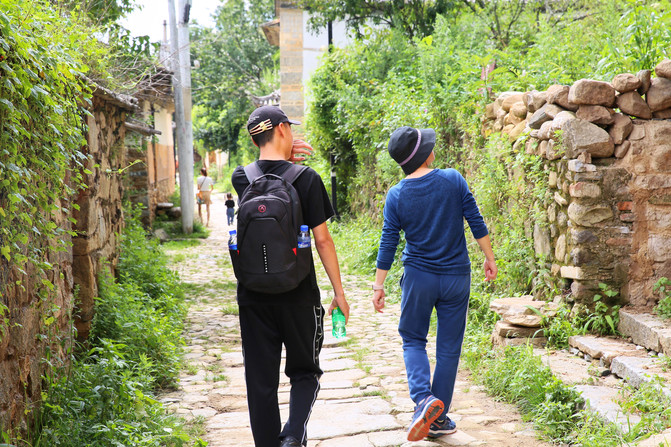
The Fengyangyi Tea and Horse Ancient Road is also called "Straw Hat Street" by local people because of the prosperous trade in straw hats in history. Until now, there are still local residents on the roadside stone benches of the ancient road or on the leisure platform of the Guanyin Ancient Well while weaving straw hats. After going into the residents who make straw hats and consulting carefully, I learned that higher-quality straw hats cost 50 yuan each, and it is not cheap to bargain with them in the local dialect. Looking at their kind and happy faces, I guess that they are just doing it for a reason. As for how much they can sell, it doesn't matter.
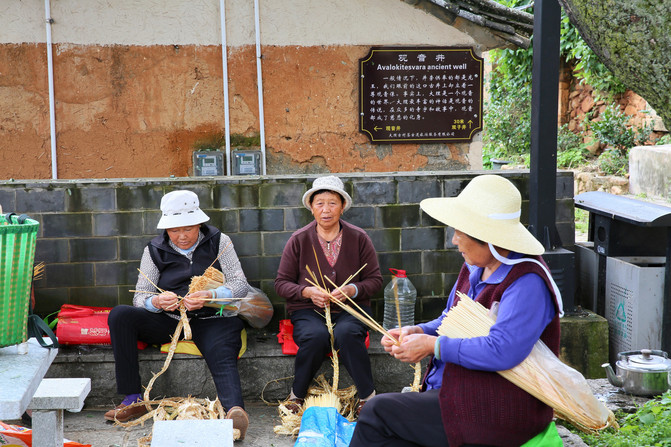
The Ancient Tea Horse Road in Fengyangyi still retains the oldest Guanyin Well, Shuangzi Well and ancient villagesOf course, there are also projects such as the Tea and Horse Ancient Road Museum, Gable Buddhist shrines, ethnic craft experiences, and horse riding that are worth visiting and experiencing.

Two ancient temples: Fazhen Temple and Heding Temple
1. One year later, visit Fazhen Temple again: About 100 meters behind the mountain of the Ancient Tea Horse Road, there is hidden a long-standing, quiet, thousand-year-old temple Fazhen Temple that was once a royal temple in history.
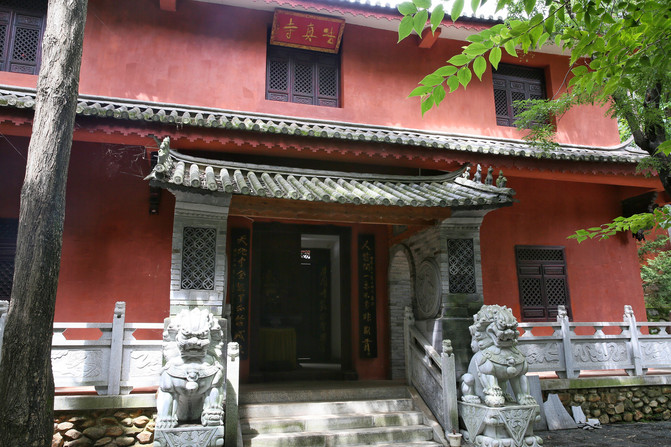
Fazhen Temple was built during the early Tang Dynasty. It is one of the earliest Buddhist temples in Dali. It was built by Shijin, the second generation king of Nanzhao, so it is the Nanzhao State Temple. To the west of the temple is the ruins of the ancient capital of Nanzhao State, and to the south of the temple is the ruins of Taihe City, the capital of Dali. The surrounding environment of the temple is peaceful and it is the birthplace of the ancient capital of Nanzhao State and Dali State.
Fazhen Temple has been built for thousands of years. Due to historical reasons, the temple was in ruins at the end of the last century. The roof leaked, the sacred icons were covered with ashes, the walls were broken, the temple door collapsed, and tourists were worried. It was not until 1995 that a Chuxiong master uploaded it and traveled here. He saw this scene and was filled with emotion, so he went to great lengths to restore Fazhen Temple.
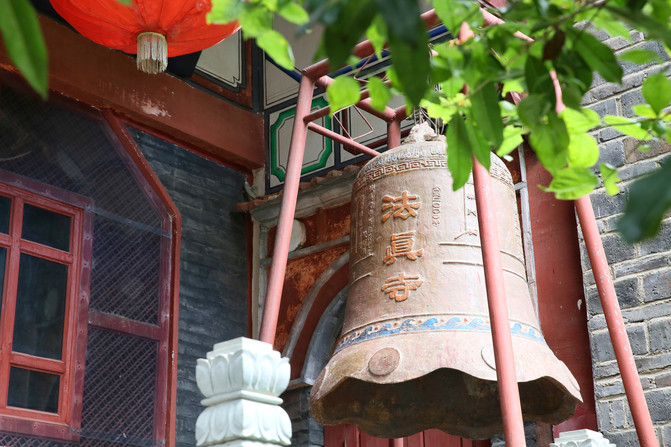
I vaguely remember that on March 14 a year ago, I met Master Yin Jue (originally surnamed Qiao) in the temple with my friends and chatted with him about the historical story of Fazhen Temple over tea. He is a brave man who is determined, calm, confident and dares to face suffering. This is really a quiet place.“... Don't compete with the world. If you have a Buddha in your heart, everything will be indifferent. If you do things well, you will be a Buddha when you are calm. If a Buddha lives in your heart, you will be a Buddha..."
Now, when I visited Fazhen Temple again with my family, coincidentally, I ran into Master Yinjue again. After three to five words of pleasantries, the master brought the fruit for us to taste. While I was standing in front of the main hall chatting with my master, a couplet at the door completely attracted my attention."Reading is a pure land everywhere, but behind closed doors is a deep mountain”。Reading it over and over again is really meaningful.
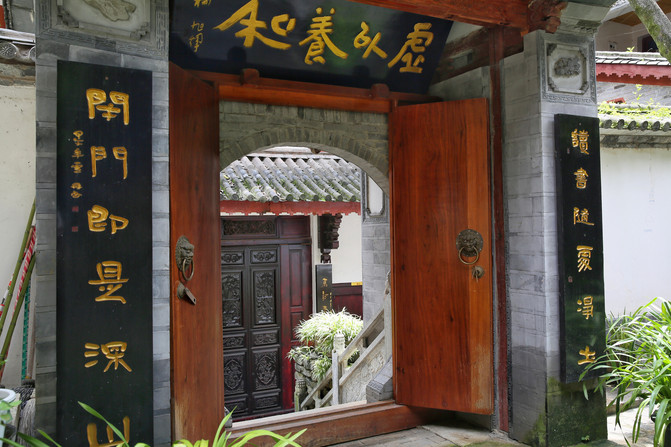
Maybe it was because the previous tea chat was not enough, or maybe it was because we learned a lot more deeply about each other. For the first time, Master took me to explore the ancient stone tablets in the temple. One stone tablet had the words "Kangxi 51st" and the other had the words "Created from the Early Tang Dynasty". I couldn't understand more of them. Generally speaking, only the stone tablets witnessed the long history of Fazhen Temple.
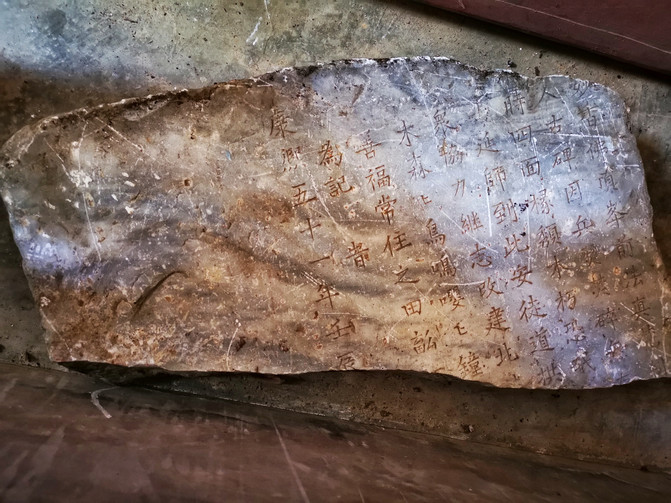
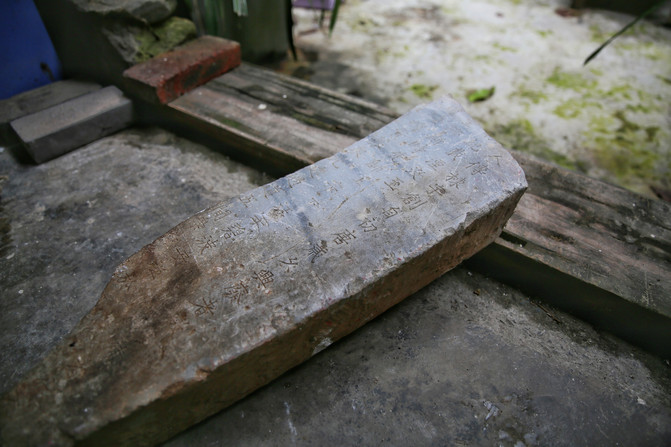
Quietly listening to some of the master's insights, isn't this "reading is a pure land everywhere, and closing doors is a deep mountain"? Near lunch time, under Master's repeated requests, we had vegetarian meals with them (there were only two people in the entire temple).
During the meal, I learned that the food and use of the temple were basically given to them by nearby villagers or tourists who came to visit the temple. The little master had not gone to the market for more than half a year. The small regret is that they did not bring some necessities such as rice, oil, salt, etc. to the temple. They had to donate a few hundred yuan so that they could buy the necessary items themselves.
Let go of the desire to surpass yourself, just because you and I are both ordinary people. Be kind to others, and it will be better if you are more kind. Go up and be good again, and the world will be wonderful because of you.
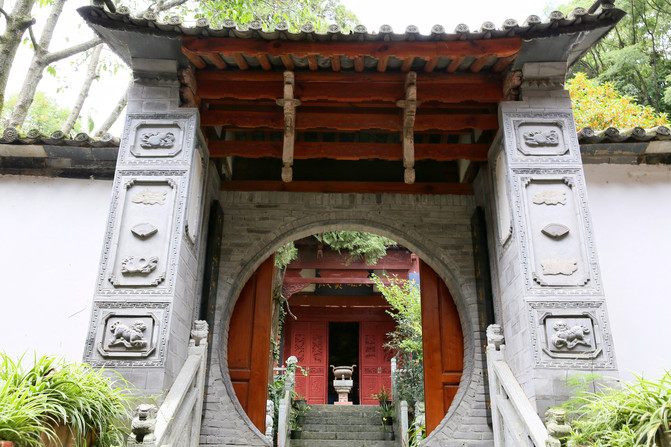
2. Sanguu Heding Temple, the scenery remains the same: this is the third time I have visited the Jingang City ruins at the foot of Cangshan Mountain in Dali. From Fazhen Temple at an altitude of 2060 meters, take the small road and horse trail, and travel for about 2.5 kilometers to reach the top of Heding Temple on the Buddha Peak.
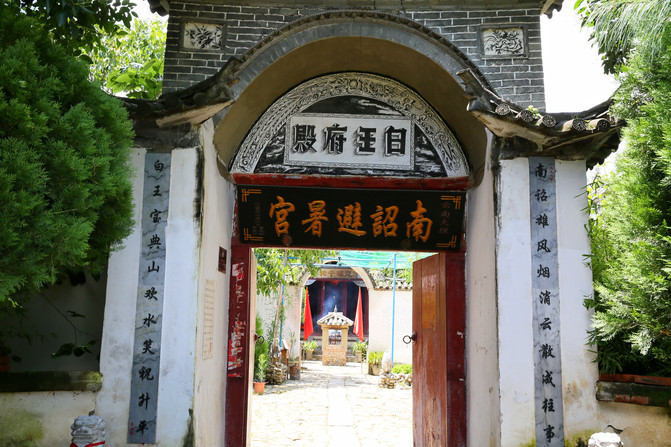
There is a small viewing platform on the north side of Heding Temple, with a very wide view. You can have a close view of Dajingpan Village in Haixi, Hilton Hotel, Haixi scenery, etc. In the distance are the scenery of Cangshan, Erhai Lake and Haidong. The southeast side is the location of the Jingang City Ruins, and the city wall ruins are still clearly visible.
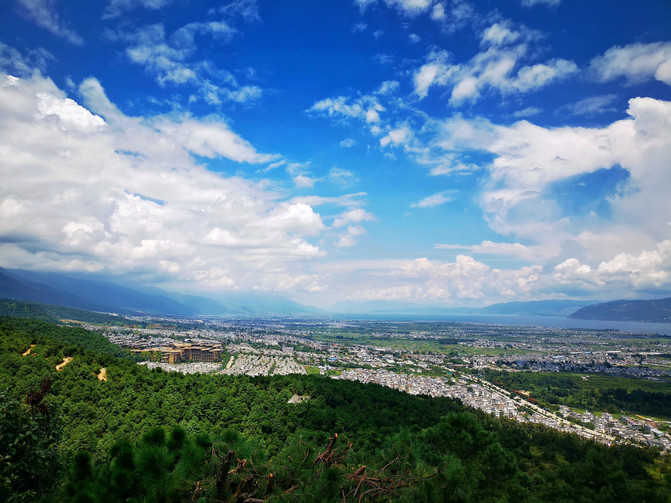
History records that when Jingang City was being built, the Tang Dynasty bestowed a "Diamond Sutra" and enshrined the "Diamond Sutra" in the city, so it was named Jingang City. Jingang City is a military fortress with a high location and broad vision that is suitable for defense. In the early stage, Taihe City considered its military functions and uses more. The famous Tianbao War was commanded and completed here.
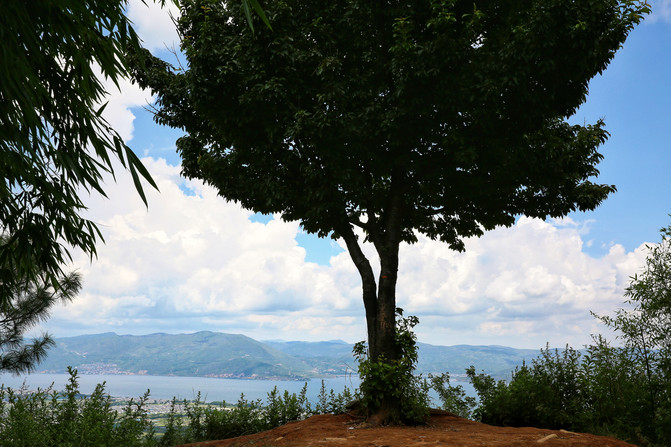
According to historical records, Jingang City in Taihe City was the summer palace during the Nanzhao period. The core of Taihe City was Jingang City, which was a small city in Taihe City. Jingang City was built on the peak of Buddha. It is an irregular circular city. The summer palace and training platform of King Nanzhao were built in the city. In the Qing Dynasty, it was renamed the White King Hall. This is the famous Heding Temple.
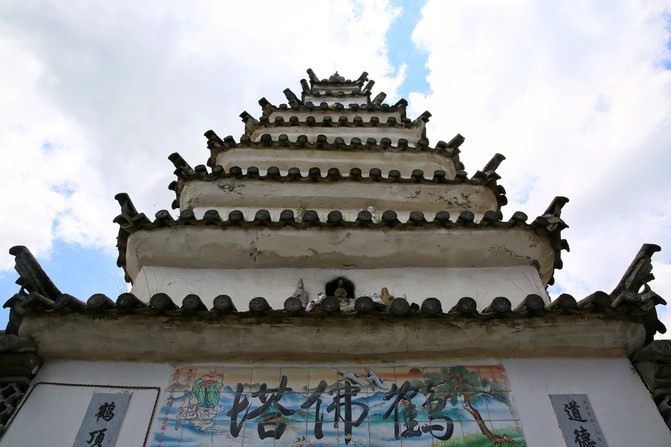
Harvest from this Cangshan hiking:
1. At the foot of Cangshan Mountain in Dali, an 8-kilometer round-trip hike is between 2060 meters and 2230 meters. It takes 5 hours and is of average difficulty.
2. A family of three uses their spare time during the summer vacation to go outdoors. First of all, I exercised my body, enhanced my physique and willpower, and secondly, enjoyed the infinite scenery along the way. There was also "reading everywhere in pure land, and closed doors were deep mountains." Traveling is also a good way to learn.
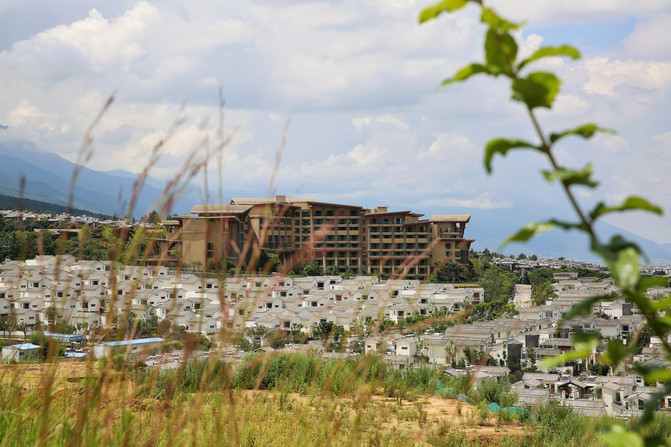
Thanks for reading! I wish you all the best! I travel freely, like traveling, and happy to share! If you want to know more, visit tourist attractions in Dali. Please pay attention to me, more exciting travel awaits you!
Previous Article:Raiders| Visiting Dali in autumn, the scenery will show the flavor of Dali and feel the charm of "autumn" and the tranquility of the years
Next Article:Shimen Range Rover
